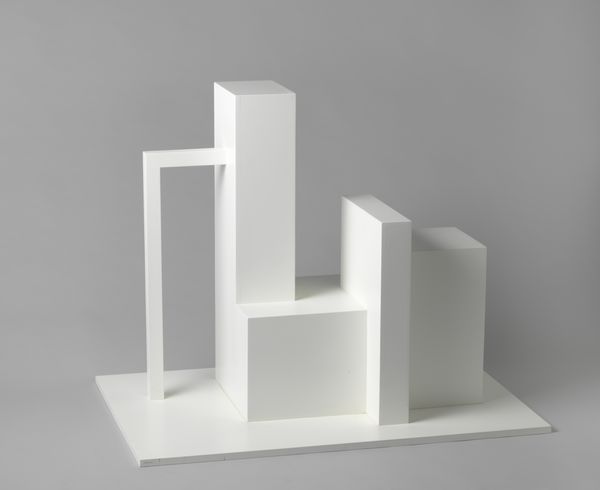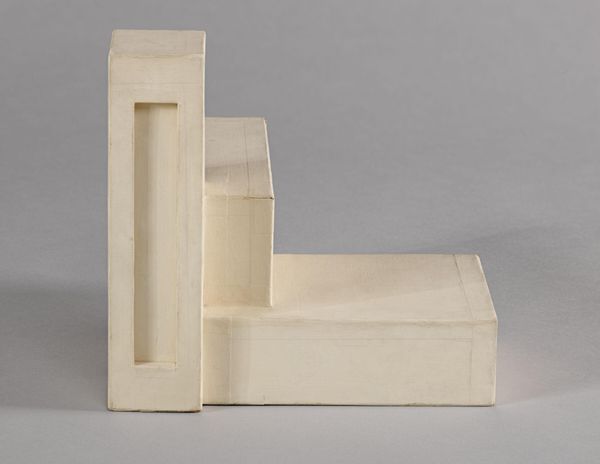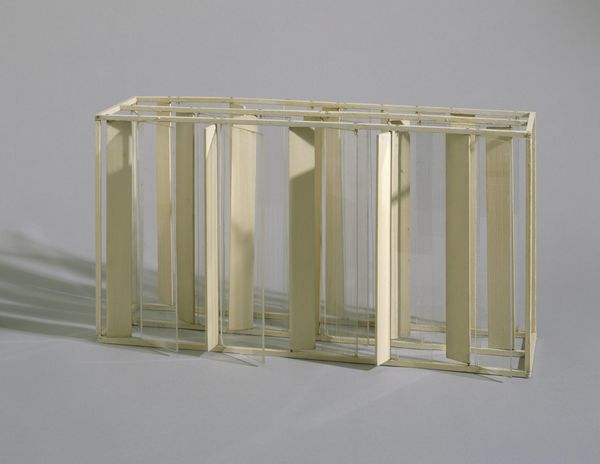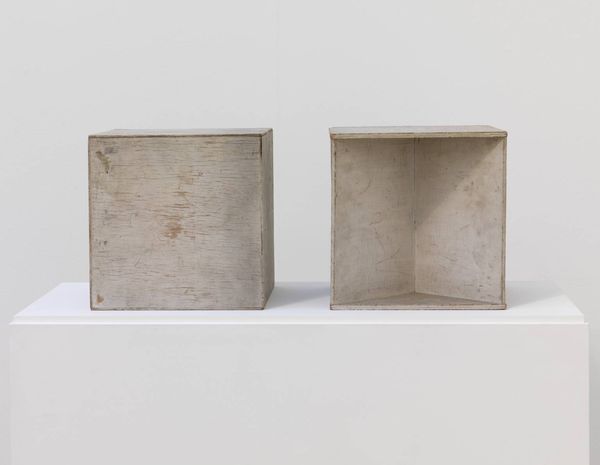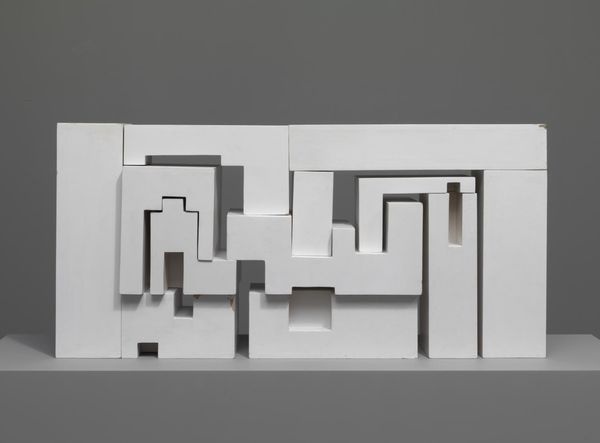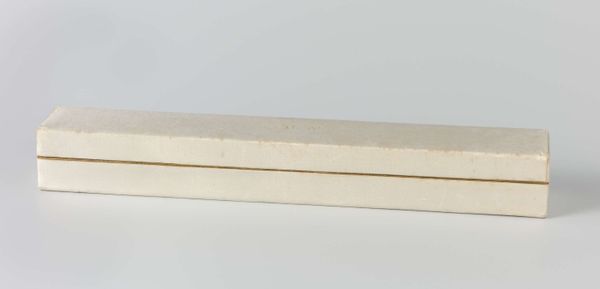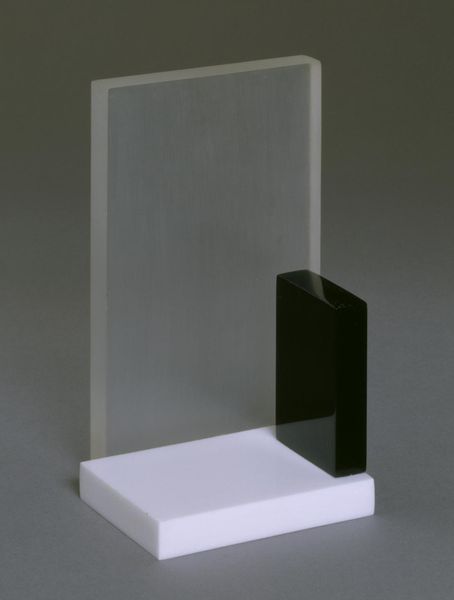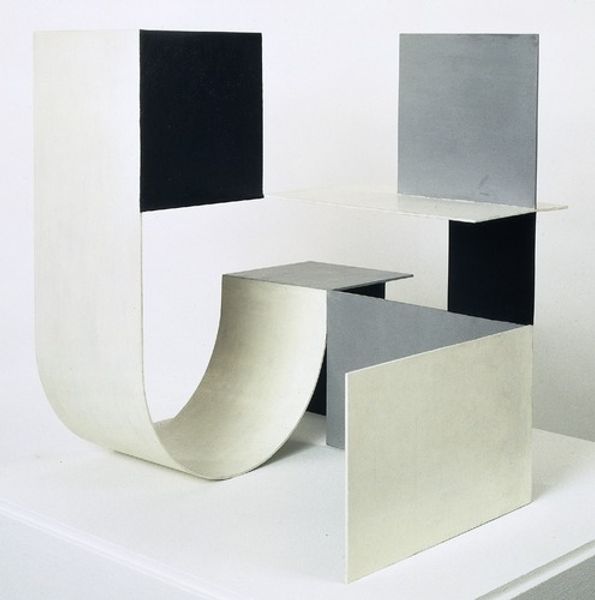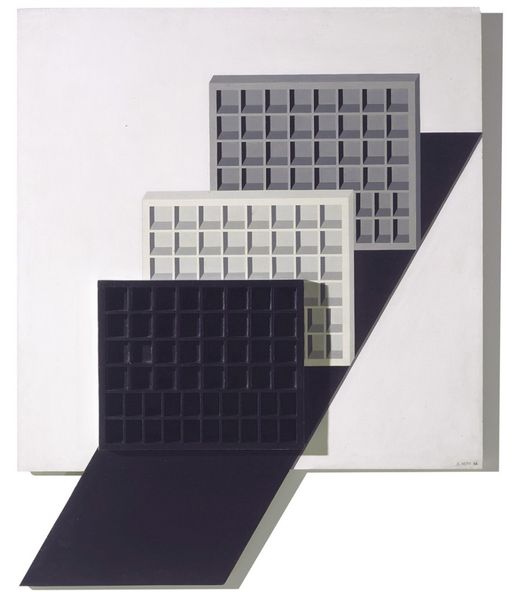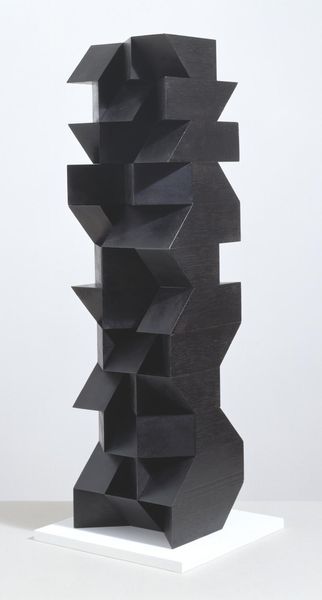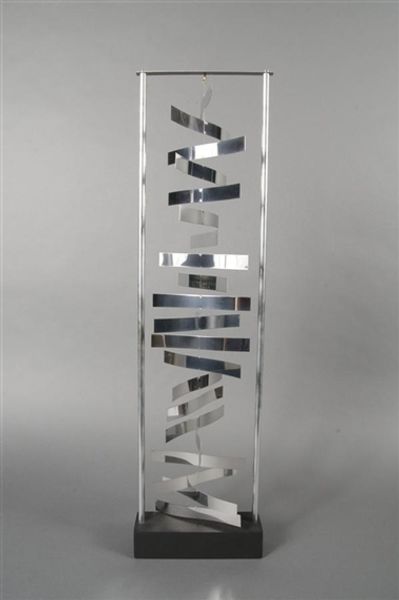
Series 1-2-3: 47 3-Part Variations on Three Different Kinds of Cubes 1968
0:00
0:00
sculpture
#
clear graphic shape
#
computer generated paper art
#
3d printed part
#
virtual 3d design
#
product design photgrpaphy
#
3d shape
#
sculpture
#
white focal point
#
3d modeling
#
cut-out
#
cutout
Dimensions: overall: 30.4 x 111.7 x 10.1 cm (11 15/16 x 44 x 4 in.)
Copyright: National Gallery of Art: CC0 1.0
Curator: Looking at this piece, "Series 1-2-3: 47 3-Part Variations on Three Different Kinds of Cubes," dating from 1968 and created by Sol LeWitt, I immediately think of minimalist sculpture and the intersection of art and industrial production. What’s your take? Editor: Well, right off the bat, it strikes me as incredibly austere. Almost sterile in its precision, but I find a strangely comforting rhythm in its repetition. Like a mathematical lullaby. Curator: That "mathematical lullaby" is key. LeWitt used a system of variations based on simple cubes. The artwork relies on pre-set rules executed with a sort of deliberate detachment. It almost feels like it could be manufactured, pushing the concept of artistic labor into question. Editor: Manufactured, yes, but the eye dances across the shifting voids. It makes me wonder, is he commenting on the empty promises of industry, the potential hollowness beneath the facade of mass production? I’m also curious about why he chose this particular arrangement of solid and void. Curator: His arrangement stems from logic, based on the 47 variations suggested by the title. The structure becomes less about aesthetic choice and more about process and systemic execution. It's almost like a flowchart manifested in sculptural form. The industrial qualities are intentional; Sol LeWitt engaged fabricators and actively blurred the line between design and fine art. Editor: Ah, so the industrial feel isn't accidental—more like he is implicating himself in the production! Still, seeing it here and now, stripped from that initial intent, it feels ghostly to me. Those voids become almost metaphysical. Does that logic system create deeper mysteries despite itself? Curator: The apparent coldness certainly doesn’t negate its impact; it’s more a commentary on capitalism's embrace of those very same structures. By focusing on form and procedure, he’s reflecting something profound about production in the modern age. The piece requires us to think not just about the “what” of art, but the “how” and the “why”. Editor: So, what began as a cold assembly becomes a fascinating and perhaps even haunting exploration. The simple becomes complex. Thanks for your insight. Curator: My pleasure. Thinking about these variations, the artwork echoes even louder within our current culture. Food for thought indeed.
Comments
No comments
Be the first to comment and join the conversation on the ultimate creative platform.
